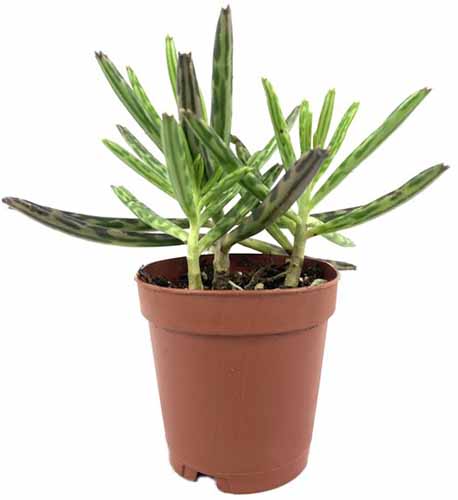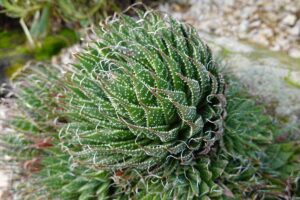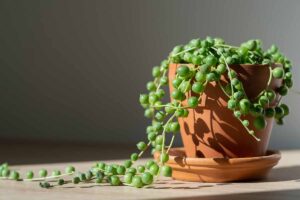Kalanchoe delagoensis
In our exuberance, we succulent lovers are sometimes given to a smidgen of exaggeration.
So I will start by addressing the assertion that mother of millions succulents, Kalanchoe delagoensis, will produce a million baby plantlets.
It will not.
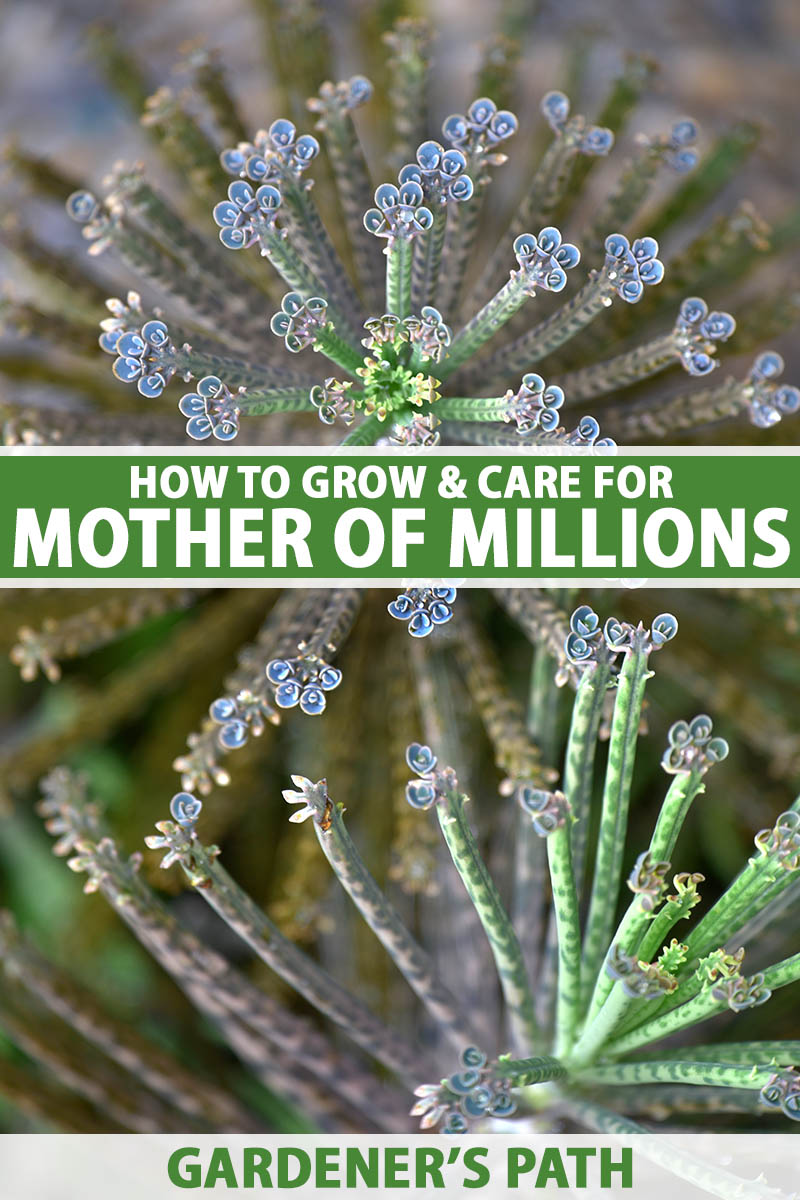
We link to vendors to help you find relevant products. If you buy from one of our links, we may earn a commission.
But you can expect dozens, even hundreds, of plantlets and divisions from a single mother of millions. Just like us, it’s exuberant.
Don’t worry, plant parent. You don’t have to cultivate all those offspring!
Before you fret about too many babies, let’s begin with tips for growing and caring for a mother of millions aka chandelier plant.
Here’s what I’ll cover:
What You’ll Learn
What Is Mother of Millions?
The succulent known commonly as mother of millions originally came from Madagascar and is one of the more than 100 species of Kalanchoe.
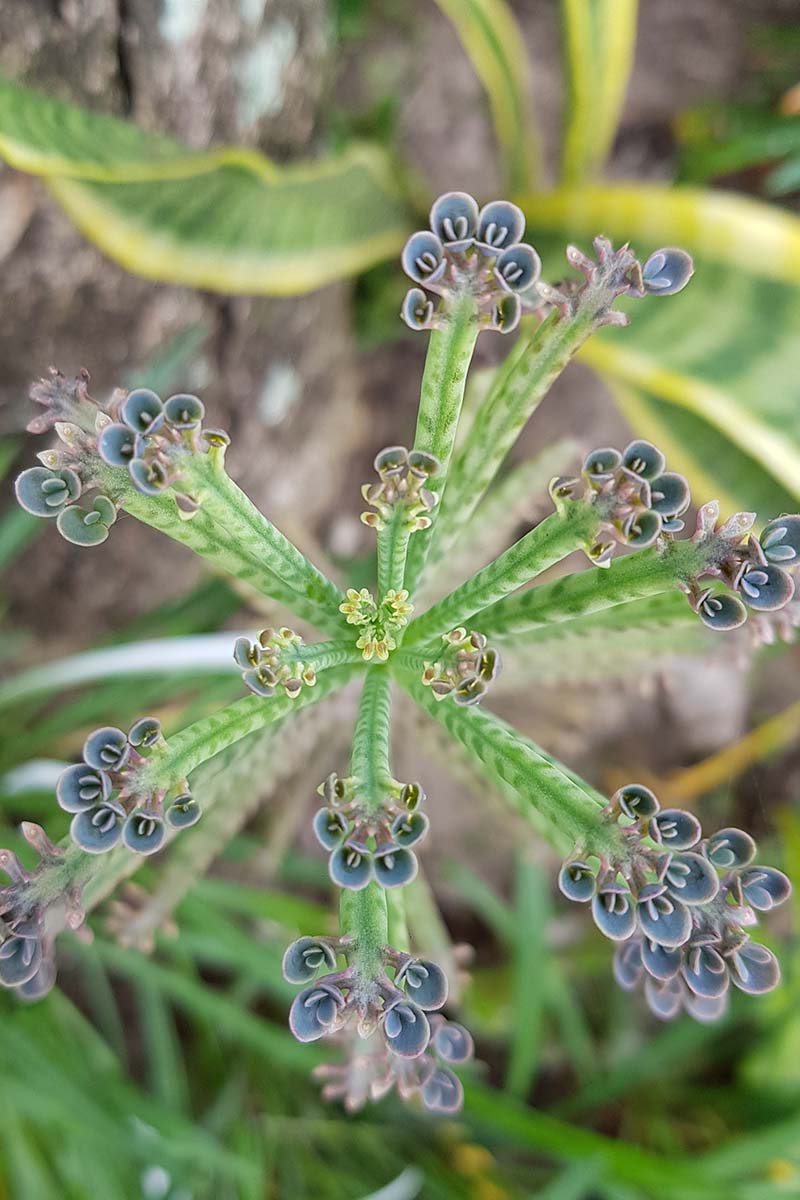
It earned this name thanks to viviparous asexual reproduction, wherein it produces many baby plantlets at a time on the tips of its upright leaves.
These pups drop on their own to root in any available soil.
Mother of millions can also reproduce via seeds produced when its bell-shaped flowers are pollinated.
These range from salmon to dark orange in color, but they’re typical only on outdoor specimens, not those that are cultivated indoors.
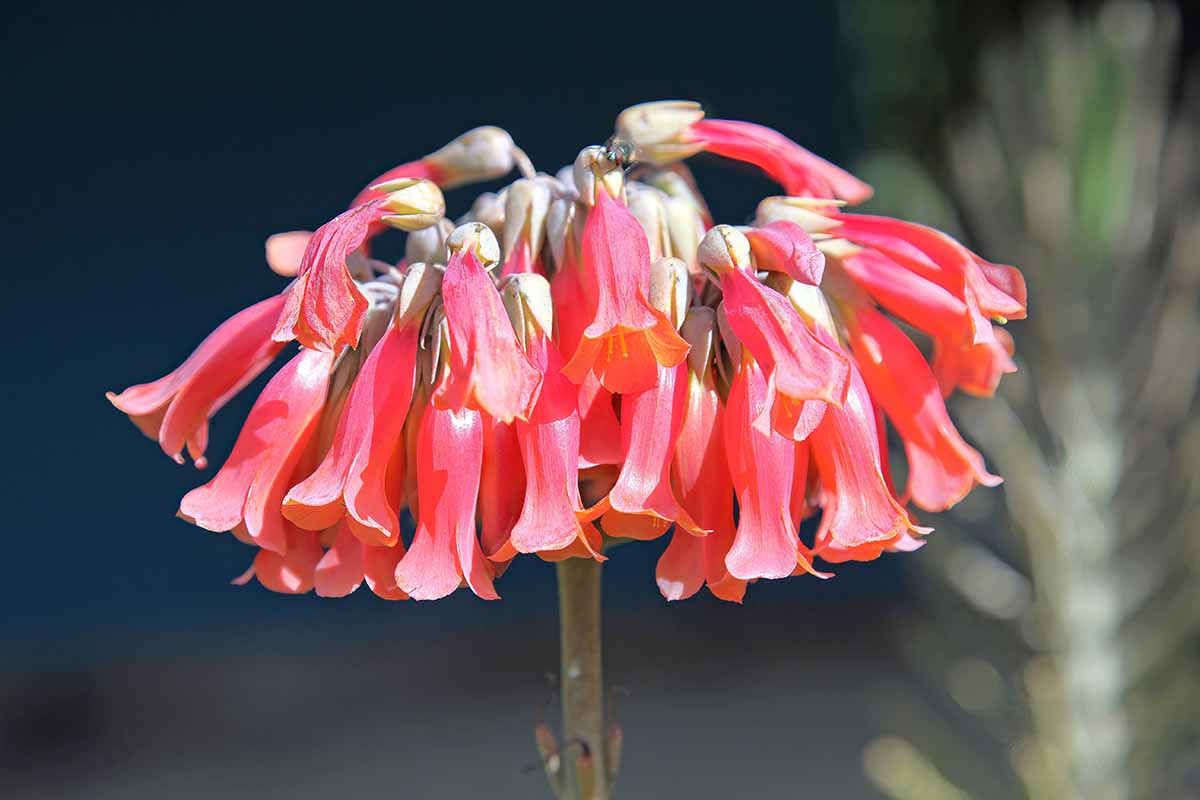
K. delagoensis has a few other catchy nicknames, too, including chandelier plant and devil’s backbone.
These colorful names arise from its appearance, one of the most unusual of any plant you can grow for its foliage.
Its fleshy stalks grow upright, with greenish-gray leaves and purple mottling.
The symmetrical lanceolate leaves can reach two to five inches long, and they are arrayed like the sconces in a chandelier, reaching for the sky.
At their tips, the tiny “pups” or plantlets develop in a horseshoe pattern. As the plantlets age, they develop tiny roots while they’re still attached to the leaves.
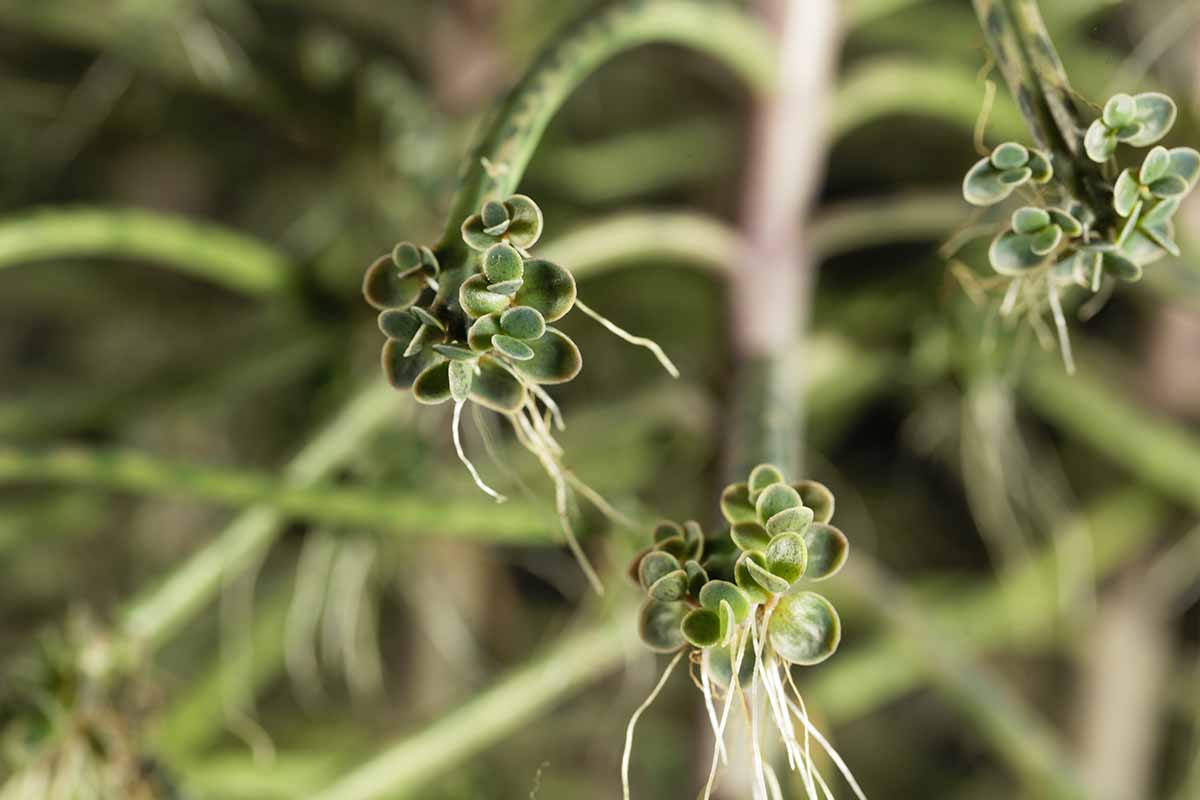
To me, the overall vibe of this species is prehistoric – I can imagine Littlefoot the dinosaur would welcome it for forage.
Chandelier plant can attain a height of six feet outdoors under ideal conditions. Indoor potted specimens are smaller, growing to about three feet tall max.
A hardy perennial in Zones 9 to11, it’s a good choice for gardens in drought-prone areas since it can do without water for a prolonged period.
But there’s a catch, depending on where you live: This exuberant succulent can propagate so aggressively, with its pups taking root anywhere they find an available patch of soil, that it can become invasive – this is particularly a problem in Australia, New Zealand, and South Africa.
This is mostly a problem for farmers in those areas, since mother of millions is toxic to livestock, but it’s worth keeping in mind that an outdoor specimen can take over the garden or even the lawn if you grow it in the ground in a region where it really thrives.
It is listed as invasive in Hawaii, and is causing problems in parts of Florida and Texas where it outcompetes native species.
Vendors and fellow indoor gardeners may also refer to this succulent by its former classification, Bryophyllum tubiflorum or other botanical names including K. tubiflora.
This kalanchoe species is also often confused with K. daigremontiana, aka mother of thousands. But while that succulent also reproduces viviparously, it has wider, plain green leaves and the plantlets grow in the leaf margins, not on the tips.

Another species that shares the same common name is K x houghtonii, a hybrid cross of K delagoensis and K. daigremontiana. This hybrid has the same upright stems as K. delagoensis but the leaves are thicker, with notches along the edges.
For tips on growing and caring for chandelier plant outdoors, keep reading. We’ll cover indoor cultivation in all Zones as well.
A Note of Caution:
While K. delagoensis is toxic to cattle, the experts at the Missouri Poison Center say kalanchoe won’t poison humans if ingested, but it may cause nausea or vomiting.
If someone accidentally eats part of a chandelier plant, the center recommends wiping their mouth with a clean towel, followed by a few sips of water. If symptoms develop, call a poison control center or your health provider.
Pet owners should call their veterinarian immediately if a pet chews on or ingests any parts of this plant.
Propagation
I’m sure I’m not the only one who’s been told a plant will reproduce so readily I won’t be able to keep up with it, only to have that variety grow slowly and not yield any viable cuttings, divisions, or pups at all.
But mother of millions reliably develops new plantlets, complete with little roots. The plants will do this without your encouragement and the plantlets are simple to propagate.
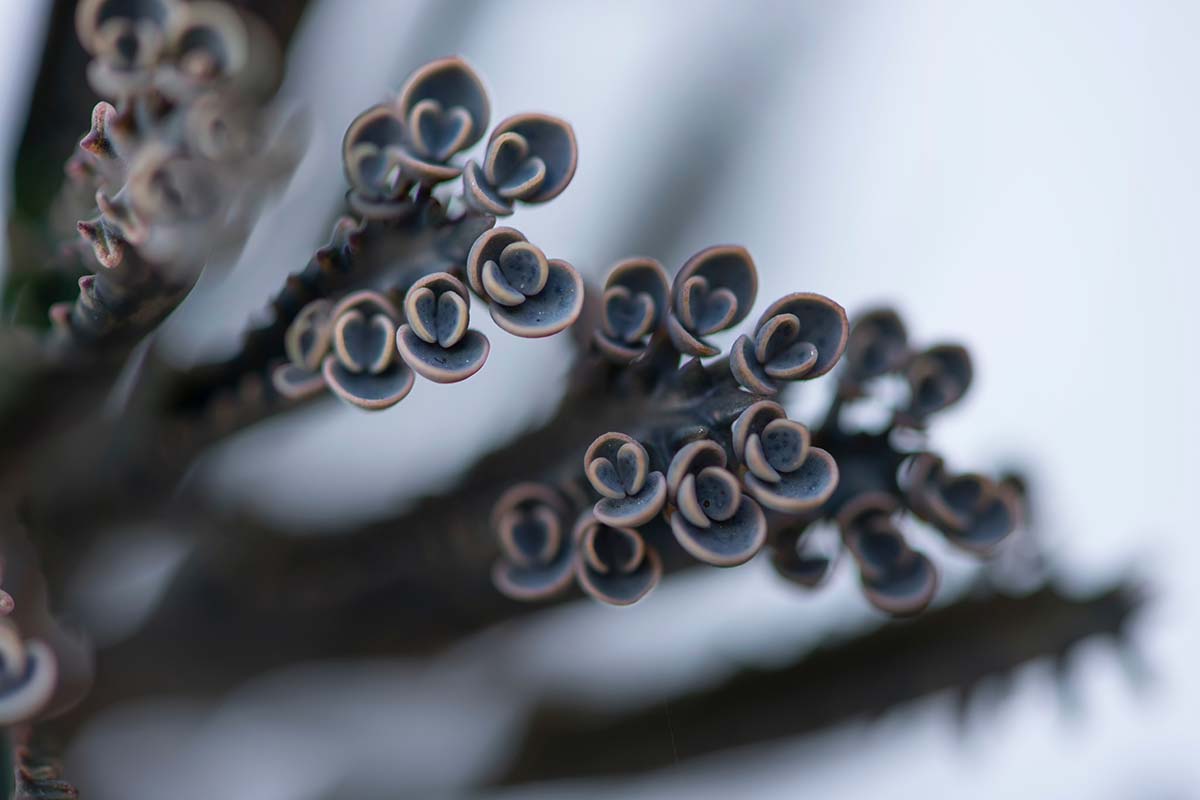
You can either repot the ones that fall from the parent plant and root themselves, or you can gently knock a few off the ends of the leaves into your hand and sprinkle them on a container filled with succulent soil.
It’s also possible to propagate K. delagoensis from seed, or you may take stem or leaf cuttings to root, but I would only devote the time and energy required to try those methods if you aren’t already staring down leaves laden with little plantlets.
You can find step-by-step instructions for propagating succulents from cuttings in our guide.
How to Grow Mother of Millions
I cannot overstate the ease of growing these succulents.
My local nursery, Stanley’s Greenhouse, literally has dozens of perfectly healthy specimens growing in a few tablespoons of soil, right where they fell from a potting table to the cinder blocks below. I’ve seen them thriving for going on six years now.
Whether you acquire established starts or purchase potted plants, it’s not too tough to keep a mother of millions succulent alive.
Here are the basics:
Outdoors
If you have a plot that needs an intriguing specimen in the two- to six-foot height range and live in USDA Hardiness Zones 9 to11, consider planting some mother of millions outdoors.

The plants will need well-draining soil, first and foremost.
They’ll also need full sun for six hours a day, along with protection from the harshest rays. So, choose an area with sun in the mornings and at least part shade in the afternoons.
Pick a place that’s out of the wind, too, since these succulents can grow tall and tilt over easily.
As for the soil, it can be poor, but the preferred mix is a sandy loam.
I heartily recommend planting in containers even for those who can cultivate K. delagoensis outdoors year round, to keep their spreading habit in check.
And since they don’t require much water, you’ll be largely spared the typical watering chores involved with container gardening in warm climates.
If you have propagated your own plantlets, let them grow to at least a couple of inches tall before transplanting outdoors.
Then set the plants in the soil at the same depth as the containers they are currently growing in. Space them at least a foot apart, or plant a cluster of three or four in the center of a six-inch pot.
You can learn more about growing succulents outdoors in our guide.
Indoors
Mother of millions grows best at temperatures between 60 and 80°F. Any container specimens kept outdoors through the summer must come inside once the temperature drops below about 50°F.
Whether your chandelier plant will reside indoors for the winter months, or you plan to grow it year-round as a houseplant, make sure the container has at least one drainage hole, or preferably more.
Fill it with a cacti and succulent mix of your choice – or read our guide to learn how to make your own succulent potting soil.
You’ll also want to place a saucer beneath the pot to catch excess water so you can dispose of it.
Make sure the pot is just a few inches wider than the plant, and fill the soil to within an inch of the rim so it won’t wash out when you water.
Mother of millions will need a good source of light, either on a sunny windowsill or under a grow light.
Let the soil dry completely before watering again. If you own a soil moisture meter, this is a good time to use it, because overwatering is the easiest and most common way to harm a happy-go-lucky chandelier plant.
You can tell you’re overwatering if the leaves are yellowing, and you’ll know they aren’t receiving enough light if the stems are leggy and the leaves widely spaced.
Growing Tips
- Always grow in well-draining soil.
- Make sure containers have drainage holes.
- Provide protection from strong winds.
- Move potted specimens indoors when temps dip below 50°F in cool regions.
Maintenance
Outdoors, the most important maintenance task will be making sure the plantlets aren’t getting established somewhere you don’t want them taking over.
I know those baby chandelier plants are cute, but take care of pulling any growing where you don’t want them while they’re still small.
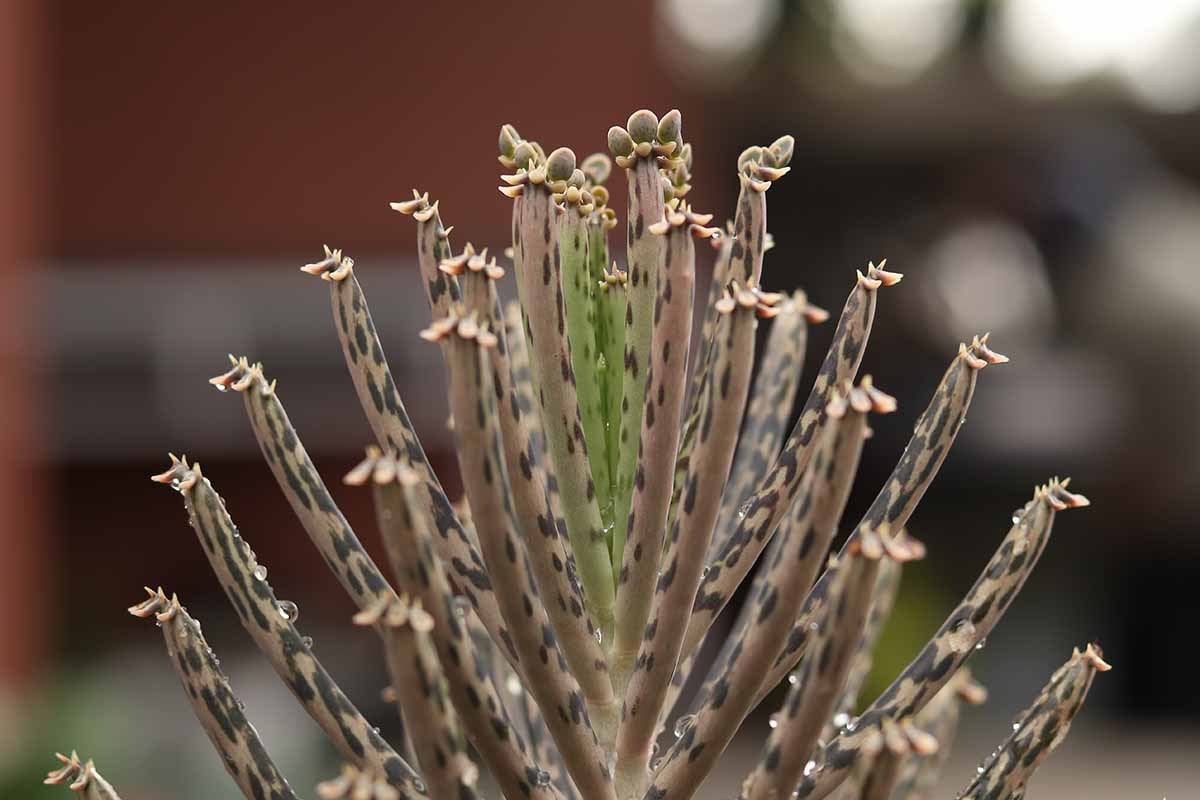
The other key maintenance task for outdoor mother of millions is seeing that any planted in containers don’t become waterlogged. Make sure to tip out any excess water after a heavy rain or if you accidentally water them too much.
It’s generally best to skip the saucers if pots are placed outdoors, and you may want to prop pots up on feet or bricks to improve drainage.
There’s not much you can do if the plants receive a drenching in the garden, but that’s all the more reason to make sure the soil drains well.
For indoor plants, you may want to fertilize them with a succulent-specific formula once every three or four months.
You can usually wait a good long time before repotting, since this species doesn’t mind being a little potbound. Mother of millions will probably only need a new pot once every three or four years.
Even then, only move it to a pot that’s one size larger, and hydrate the soil thoroughly 24 hours before repotting to avoid shocking the plant.
Where to Buy
It only takes one neighbor, friend, or fellow plant swap aficionado to supply a big group of gardeners with mother of millions plantlets galore.
If no one you know already has a parent plant, you may be able to pick up this species at your local nursery. You can also find healthy specimens online.
Chandelier Plant in 2-Inch Pot
Sold under one of its botanical aliases, K. tubiflora, chandelier plant is available in a four-inch pot from Wekiva Foliage via Walmart.
It’s also available in a two-inch pot labeled as K. bryophyllum tubiflora from Cozy Garden via Amazon.
Managing Pests and Disease
Mother of millions may have minor skirmishes with a few insect pests, notably mealybugs, scale, and spider mites.
Pick up pointers on preventing an infestation of any of these potential pests in our guide to growing kalanchoe.
As for disease, as long as you protect mother of millions from wet feet and waterlogged soil, it will probably live a trouble-free life.
If you let the soil get too soggy or leave your plant resting in pooled water, it may potentially develop deadly root rot.
The only solution for that is to destroy the plants and start over, so avoid overwatering at all costs.
Powdery mildew may also form on chandelier plants, and it looks like a dusting of floury spores that appear on the leaves.
Catch it early, and you can take care of it with a cotton pad saturated with rubbing alcohol. More advanced cases may require fungicides.
Learn more remedies for powdery mildew in our guide.
Best Uses for Chandelier Plants
This tall, raucous, dramatically mottled succulent is not for the gardener who favors compact, orderly designs.
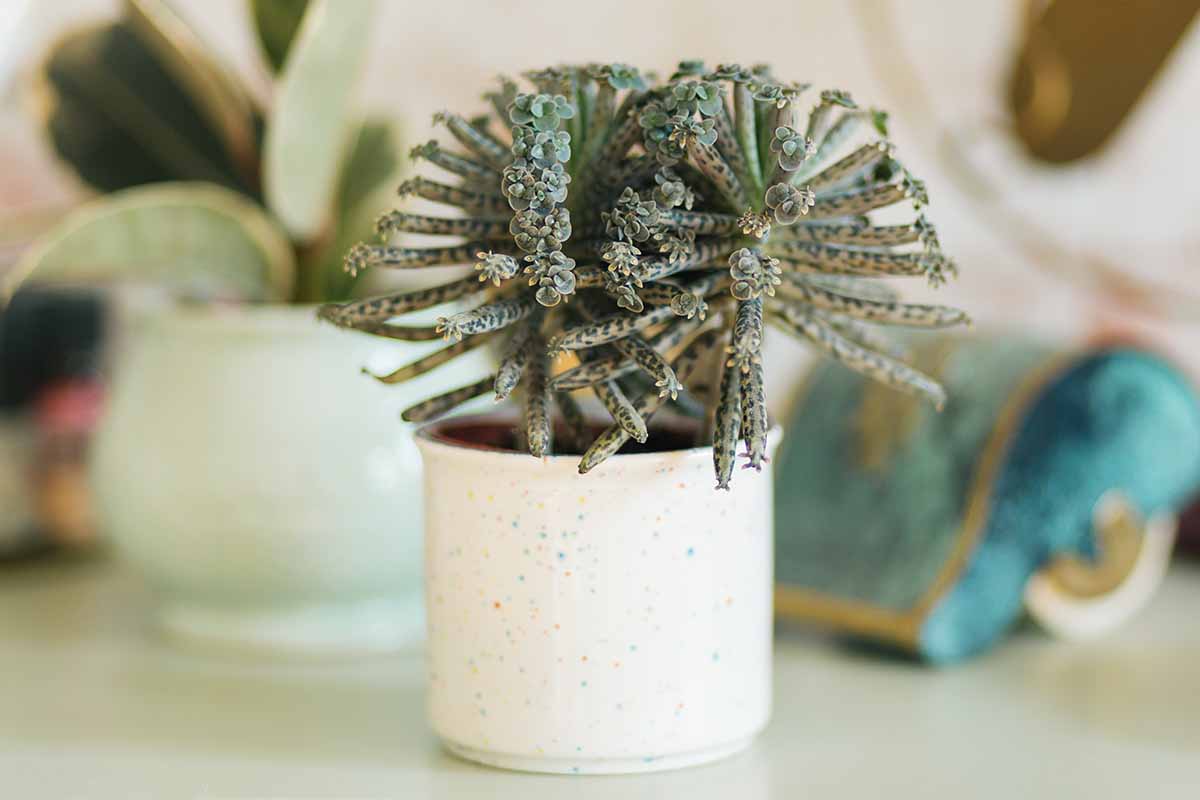
But beginner and forgetful gardeners will appreciate the way chandelier plant thrives on neglect, and veteran plant swappers will love the way it reproduces so readily.
Outdoors in warm climates, mother of millions provides foliage and flowers to improve bare patches in arid, drought-prone landscapes.
It’s also a good patio or sunroom plant indoors, or use it as an offbeat feature in a collection of orderly succulents like jade or elephant bush.
Quick Reference Growing Guide
| Plant Type: | Succulent | Flower / Foliage Color: | Green or gray with purple mottling/salmon, pink, orange |
| Native to: | Madagascar | Maintenance | Low |
| Hardiness (USDA Zone): | 9-11 | Tolerance: | Drought, poor soil, light shade |
| Bloom Time: | Winter (outdoors) | Soil Type: | Sandy loam (outdoors); cacti and succulent growing mix (indoors/ containers) |
| Exposure: | Full sun, partial shade (outdoors); direct sun or bright, indirect light (indoors) | Soil pH: | 5.5-6.5 |
| Spacing | 12-24 inches | Soil Drainage: | Well-draining |
| Planting Depth: | Surface of soil (plantlets), crown at soil surface (transplants) | Attracts: | Bees, butterflies, hummingbirds |
| Height: | Up to 3 feet (indoors), 6 feet (outdoors) | Uses: | Containers, houseplants, drought-prone gardens |
| Spread: | 12-36 inches | Family: | Crassulaceae |
| Water Needs: | Low | Genus: | Kalanchoe |
| Common Pests and Diseases: | Mealybugs, scale, spider mites: powdery mildew, root rot | Species: | Delagoensis |
And Baby Makes (Close to) a Million
With their quirky leaves, beautiful flowers, and relentless reproduction of cute little plantlets, mother of millions kalanchoe is a conversation starter, for sure.
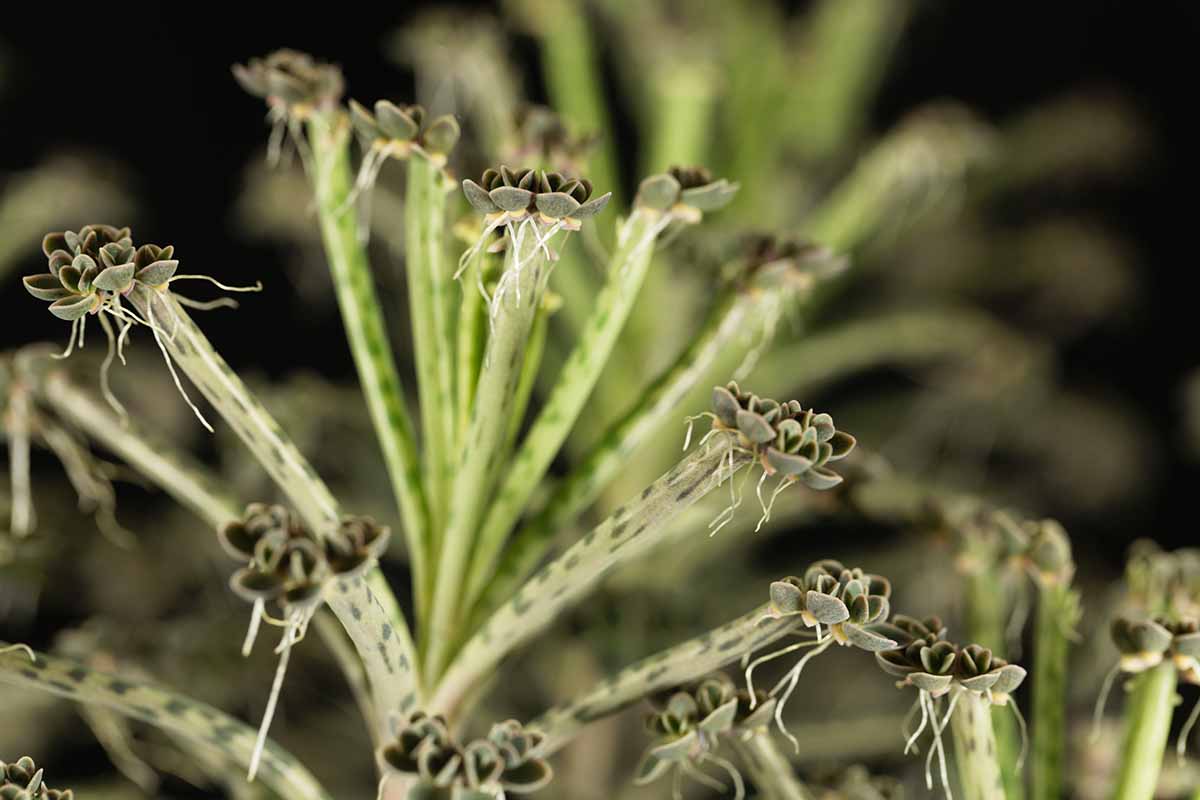
It helps that they are easy to care for and generally thrive on neglect!
Are you growing chandelier plants? Let us know in the comments section below and feel free to share a picture!
To delve further into the wide variety of succulents to grow at home, read these guides next:
